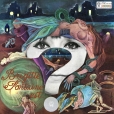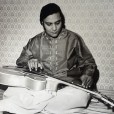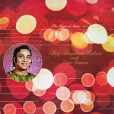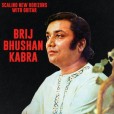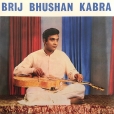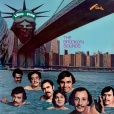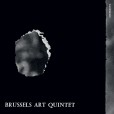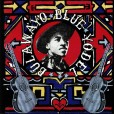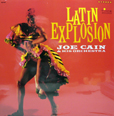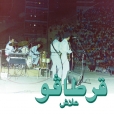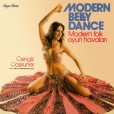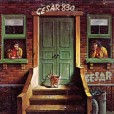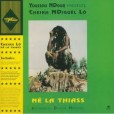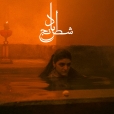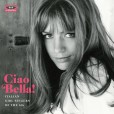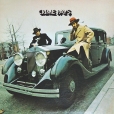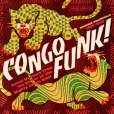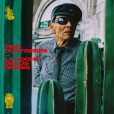Your basket is empty

Her 1968 masterwork, arranged by Jean-Claude Vannier, originally released on Saravah. Approved by Brigitte, this expanded edition features the original album, newly remastered from the original tapes, along with a second album of demos, instrumentals, and a live rendition of Il Pleut recorded for France Inter/ORTF. With a twenty-page bilingual booklet, including an introduction by Laetitia Sadier, plus full lyrics and rare archival photos.
Brilliant, game-changing re-deployments of the lap-slide Hawaiian steel guitar — in this case a Gibson Super 400, modified with a drone string and a high nut to raise the strings off the fretboard like a lap steel — away from Indian popular music, into the service of ragas.
‘A perfect blend of barrio attitude and Caribbean swing, from 1972. Confident, creative arrangements, full of heavy Nuyorican underground salsa dura, propelled by raw trombones, off-kilter piano and in-your-face percussion. Standout tracks include the uplifting, anthemic Libre Soy, and Ha Llegado El Momento, with its minor key Moliendo Café quote at the beginning — both of which have become dance floor anthems over the years. Another mid-tempo killer is Guaguancó Tropical’, a favourite in Colombia since the 1970s.’
‘Starry-eyed Brazilian love songs, ambient vignettes, warm, home-cooked beats and gentle strokes of MPB genius.’ Even a shot of West African high life!
‘The beautifully laid back sunshine soul opener has all the charm of early-70s João Donato… On the R&B inspired Quero Dizer, the swirling, lo-fi, kalimba and guitar-fronted beat is turned into a feel-good hit by the ingenuity of Berle’s honey-soaked vocal melody… Powerfully intimate, O Nome Do Meu Amor is a guaranteed tearjerker, with his stunning voice soaring over gently plucked acoustic guitar and the textural flutter of soft movement, as if we hear him writing the song in the moment…’
“A super, subtle, beautiful record,” says Gilles Peterson.
From 1969, the complete works of this collaboration between members of the mythical Babs Robert Quartet (Belgian spiritual jazz pioneers) and the jazz/rock/funk unit COS, closely affiliated with Marc Moulin, Kiosk and Placebo during the 1970s.
A holy grail of a jazz 45, musically bifocalising another two masterpieces in this format: Krzysztof Komeda’s Cul-De-Sac soundtrack and François Tusques’ Le Corbusier souvenir, with Don Cherry.
‘Lovely country & western-inspired music from 1950s Zimbabwe, South Africa and Kenya. Fingerpicking ‘omasiganda’ troubadours, train-car yodels, raw slide guitar and haunting travel-weary ballads, from rare 78s all reissued here for the first time. A heavy duty document of a nearly lost scene, and all the songs are stunners to boot. George Sibanda, Josaya Hadebe, Sabelo Mathe, Petrus Mntambo… In old-school tip-on covers, with a 12” booklet of deep research and full lyrics. Co-released with Olvido.’
‘Psychedelia, Afro-Roots & Champeta In 1980s Barranquilla.’
‘Megarbane finds a sonic through-line in his surrounding soundscapes as he draws on the chaotic energy of the crowded Beirut metropolis (Souk El Ahah), the warm atmosphere of the Lebanese countryside (Chez Mounir), or the lushness of a Mediterranean beach resort (Portemilio). In many ways, Marzipan is a cartographic feat — it travels and traces a journey across many dimensions, both sonic and physical. Megarbane’s instrumental catalogue is suitably wide-ranging: toy glockenspiel, harpsichord, pedal steel, a classic Wurlitzer et al are used liberally on the record. Free-ranging influences — beloved artists like Ahmed Malek and Issam Hajali, West African funk, European soundtracks — result in a record of somewhat unparalleled expansiveness. Floating melodies and frantic rhythmic interludes nestle together with psychedelia — fuzz-drenched guitar, sliding microtonal interludes, hypnotic rhythmic breakdowns. The resultant sound is as sprawling as the musician’s instrumental dexterity. The closer Bala 3anouan can be translated loosely to ‘without address’ — a fitting final word.’
Nine killer selections from his first four LPs, stuffed with smash hits. Proper salsa; loads of trombone. Featuring the brilliant, legendary singer Hector Lavoe.
‘Crime Pays’ is Colon being ironic about the successful marketing of his archly bad-boy persona during this period.
Also sub-titled ‘Kinshasa/Brazzaville 1969-1982’.
‘These new sounds emerged at a time when the Congolese record industry – previously dominated by European major labels – was experiencing a period of decline due to rising production costs.The void was filled by dozens of entrepreneurs willing to take chances on smaller scale releases. It was the beginning of a golden age for Congolese independent record labels, and the best of them – Cover N°1, Mondenge, Editions Moninga, Super Contact – preserved the work of some of the region’s finest artists, while launching a generation of younger musicians into the spotlight.
‘Congo Funk! is the story of these sounds and labels, but also it is the story of two cities, separated by water but united by an indestructible groove. The fourteen songs on this album showcase the many facets of the Congolese capitals, and highlight the bands and artists, famous and obscure, who pushed Rumba to new heights and ultimately influenced the musical landscape of the entire continent and beyond.’
